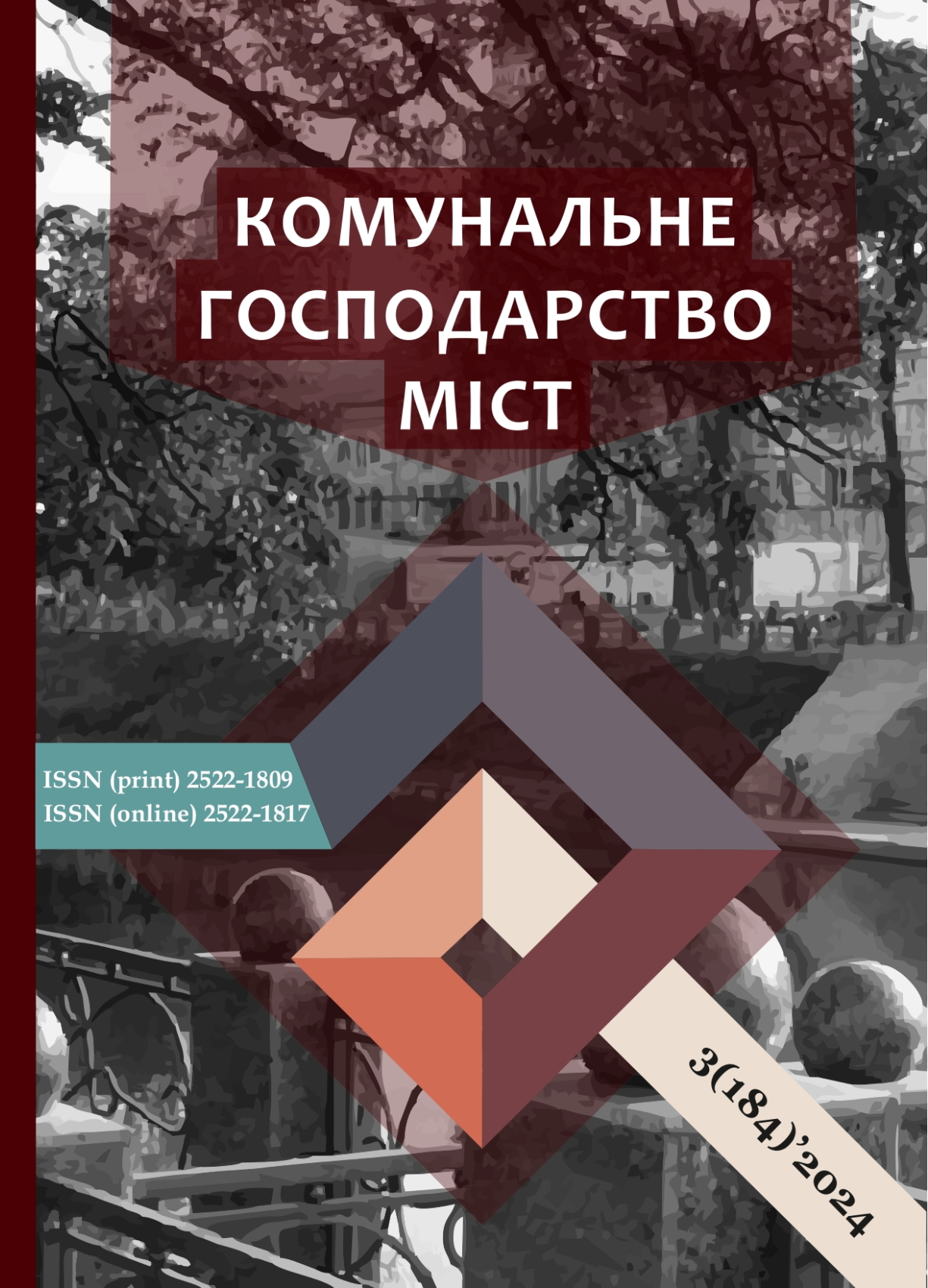GEOINFORMATION SUPPORT FOR DEMINING THE TERRITORIES OF THE KHARKIV REGION
DOI:
https://doi.org/10.33042/2522-1809-2024-3-184-157-161Keywords:
geographic information systems, database, explosive ordnance, demining, security, recoveryAbstract
Modern conflicts and military actions result in massive landmine laying, making them dangerous for civilians. After the completion of hostilities, there is an urgent need to clear these areas to restore human life and infrastructure.
The article presents the application of geographic information systems (GIS) and databases for the inventory and management of explosive ordnance data in post-conflict areas using the example of the Kharkiv region. The paper explains the structure and functioning of the explosive ordnance database, designed to optimise the demining process and increase its efficiency and safety.
The explosive object database receives information from various sources, including mobile groups of the State Emergency Service of Ukraine, the National Police, and other units. The primary tool for fixing the coordinates of explosive objects is GPS devices. The database contains information about the coordinates of unexploded ordnance, their type, condition, date of discovery, the group that discovered it, and other information. The database allows searching and filtering of explosive objects by various criteria, generating reports on the number and types of explosives found in different areas of the region. Also, it is possible to visualise the data from the database on maps to enhance understanding of the distribution of explosive objects.
Using the database can significantly improve the planning and coordination of demining work, track the progress of demining, assess the resources required for demining, warn the civilian population about the danger, analyse risks, conduct statistical analysis, report to the authorities, and train sappers. Implementing such a database will allow optimising demining planning, increasing the safety of sappers, and accelerating the restoration of a safe life for the population. The technology’s adaptability also means it can be utilised in other post-conflict regions, highlighting its potential for broader application. This system underscores the importance of integrating modern technological solutions in addressing the challenges of post-conflict reconstruction and safety.
References
The HALO Trust Partners with Esri in Ukraine. (n.d.). Retrieved from https://www.halousa.org/latest/halo-updates/news/the-halo-trust-partners-with-esri-in-ukraine/
UNMAS. (n.d.). Retrieved from https://www.unmas.org/en
Hamlin, J., & Jaupi, L. (2018). Minefield sketch maps in humanitarian mine action. The journal of conventional weapons destruction, Vol. 22(Iss. 1), 34–39. Retrieved from https://commons.lib.jmu.edu/cisr-journal/vol22/iss1/5
Torbet, N., & Thompson, P. (2017). 21st century survey in eastern Ukraine and the use of technology in insecure environments. The journal of conventional weapons destruction, Vol. 21(Iss. 2), 20–27. Retrieved from https://commons.lib.jmu.edu/cisr-journal/vol21/iss2/6
Conway, S. (2024). Surveying Eighty-Year-Old Battle-fields in Solomon Islands. The Journal of Conventional Weapons Destruction, Iss. 1, Article 4(Vol. 28), 18–23. Retrieved from https://commons.lib.jmu.edu/cisr-journal/vol28/iss1/4
Katherine, J., Gert, R., & Pacheco, P. (2023). How UAV LIDAR Imaging Can Locate and Map Minefield Features: Cuito Cuanavale, Angola. The Journal of Conventional Weapons Destruction, Iss. 2(Vol. 27), 40–51. Retrieved from https://commons.lib.jmu.edu/cisr-journal/vol27/iss2/7
Rittenhouse, P., & Aldrich, L. (2017). Using Mobile Geographic Information Systems to Improve Operational Efficiency, Data Reliability, and Access in Mine Action. The Journal of Conventional Weapons Destruction, Vol. 21(Iss. 2), 17–19. https://commons.lib.jmu.edu/cisr-journal/vol21/iss2/5
Steyn, M., & Claassens, A. (2020). Operationalized Management Information Systems in Iraq’s DMA. The Journal of Conventional Weapons Destruction, Iss. 2(Vol. 24), 12–14. Retrieved from https://commons.lib.jmu.edu/cisr-journal/vol24/iss2/5
Bold, M., & Avenell, D. (2021). Data-Driven Decision-Making in Southeast Asia. The Journal of Conventional Weapons Destruction, Iss. 1(Vol. 25), 85–91. Retrieved from https://commons.lib.jmu.edu/cisr-journal/vol25/iss1/18
Osmolovska, I., & Bilyk, N. (2024). Cleaning the Augean Stables: Humanitarian Demining in Ukraine (GLOBSEC reports on humanitarian demining (HD) in Ukraine). GLOB-SEC. https://www.globsec.org/sites/default/files/2024-01/Cleaning%20the%20Augean%20Stables%20Demining%20Ukraine.pdf
Downloads
Published
How to Cite
Issue
Section
License
The authors who publish in this collection agree with the following terms:
• The authors reserve the right to authorship of their work and give the magazine the right to first publish this work under the terms of license CC BY-NC-ND 4.0 (with the Designation of Authorship - Non-Commercial - Without Derivatives 4.0 International), which allows others to freely distribute the published work with a mandatory reference to the authors of the original work and the first publication of the work in this magazine.
• Authors have the right to make independent extra-exclusive work agreements in the form in which they were published by this magazine (for example, posting work in an electronic repository of an institution or publishing as part of a monograph), provided that the link to the first publication of the work in this journal is maintained. .
• Journal policy allows and encourages the publication of manuscripts on the Internet (for example, in institutions' repositories or on personal websites), both before the publication of this manuscript and during its editorial work, as it contributes to the emergence of productive scientific discussion and positively affects the efficiency and dynamics of the citation of the published work (see The Effect of Open Access).

